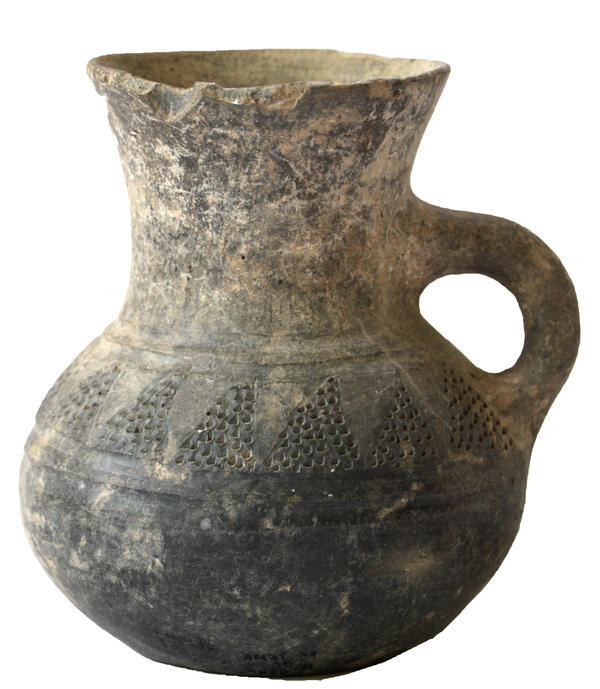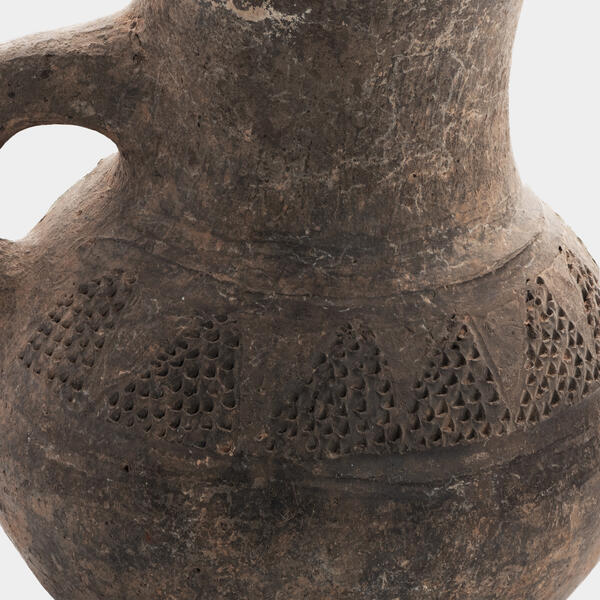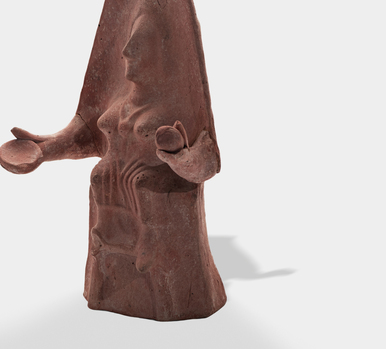The exhibition of the Tanais Archaeological Museum-Reserve includes a wheel-thrown jug dating back to the 4th century CE. It was found during archaeological excavations conducted by the Lower-Don expedition in Tanais.
The jug is a wheel-thrown gray clay vessel with a capacity of about two liters. It has a slightly concave, wide bottom and a squat body, making it a typical example of tableware. The widest part of the jug is at the bottom of the body, which gives the vessel a rounded shape. The bell-shaped neck has a straight, rounded, and thinned edge. It flares towards the top and has a uniform, rounded contour. This design allows for easy pouring of the liquid in and out of the jug. A small, loop-shaped handle has a rounded shape in cross-section and is attached to the middle of the jug, at the neck and shoulder, ensuring ease of use. Traces of soot and carbon deposits are visible in the lower part of the jug. This shows that Tanais residents used it many times both for serving food and also for heating and possibly even cooking. Perhaps, liquids were also heated in such jugs. The jug was made on a potter’s wheel using a rather coarse dark-colored clay with various impurities.
Where the shoulder of the jug meets its body, there is a band of a geometric pattern consisting of triangles with their tops facing upward. The inside of the triangles is filled with sharp-angled impressions. The outer contours are underlined with thin lines. The decorative band is framed by two grooves, giving an additional decorative effect and aesthetic appeal to the jug. This decorative band was undoubtedly applied to the surface before firing. Although such jugs were quite common in Tanais and its surroundings, it is almost impossible to find identical geometric patterns or other designs. This indicates that potters were free to choose ornamentation on their own. This choice could be based on the potter’s personal preference or the customer’s wishes.




